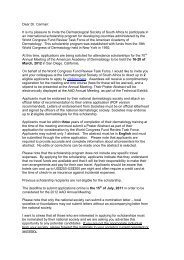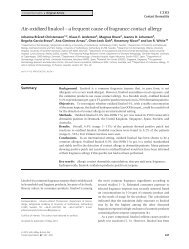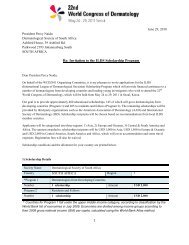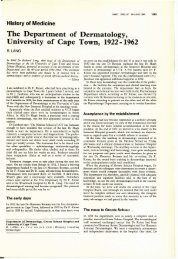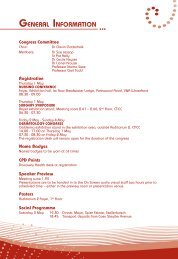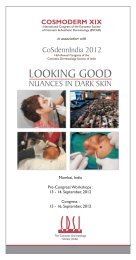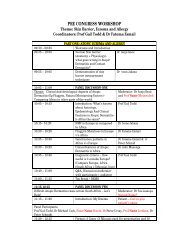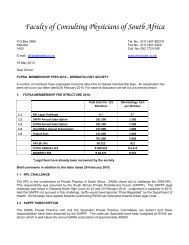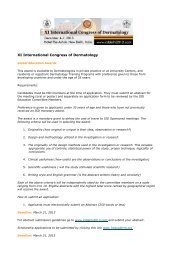Guidelines on the Management of Atopic Dermatitis ... - Dermatology
Guidelines on the Management of Atopic Dermatitis ... - Dermatology
Guidelines on the Management of Atopic Dermatitis ... - Dermatology
You also want an ePaper? Increase the reach of your titles
YUMPU automatically turns print PDFs into web optimized ePapers that Google loves.
Immediate (IgE mediated) hypersensitivity food reacti<strong>on</strong>s<br />
The diagnosis <strong>of</strong> immediate type (IgE mediated) food allergy is made by taking a thorough<br />
history, performing tests, looking for specific IgE sensitisati<strong>on</strong> (SPT and ImmunoCAP), and<br />
performing oral food challenges if indicated. Negative skin and ImmunoCAP tests are good<br />
for excluding an immediate type reacti<strong>on</strong>, but cannot exclude a delayed type reacti<strong>on</strong>. The<br />
presence <strong>of</strong> “positive” tests indicating sensitisati<strong>on</strong> is not syn<strong>on</strong>ymous with food allergy. The<br />
predictive values for a history <strong>of</strong> a food reacti<strong>on</strong>, positive SPT and positive food specific IgE<br />
in isolati<strong>on</strong> are all poor for diagnosing food allergy in AD. The level <strong>of</strong> sensitisati<strong>on</strong> must be<br />
interpreted in c<strong>on</strong>juncti<strong>on</strong> with <strong>the</strong> history, and in many cases where uncertainty remains, a<br />
food challenge test will be <strong>the</strong> best means to definitively prove food allergy or food tolerance.<br />
Skin-prick tests have high negative predictive values and are a good predictor that subjects<br />
will not have an immediate type reacti<strong>on</strong> <strong>on</strong> exposure but cannot exclude a delayed type<br />
reacti<strong>on</strong>. However, positive predictive values are low, 23,24 hence a “positive” result does not<br />
equal clinical reactivity. Published “cut-<strong>of</strong>f levels” for clinical relevance have been studied for<br />
selected allergens (child >2 years: milk ≥8mm, egg ≥7mm, peanuts ≥ 8mm; child



